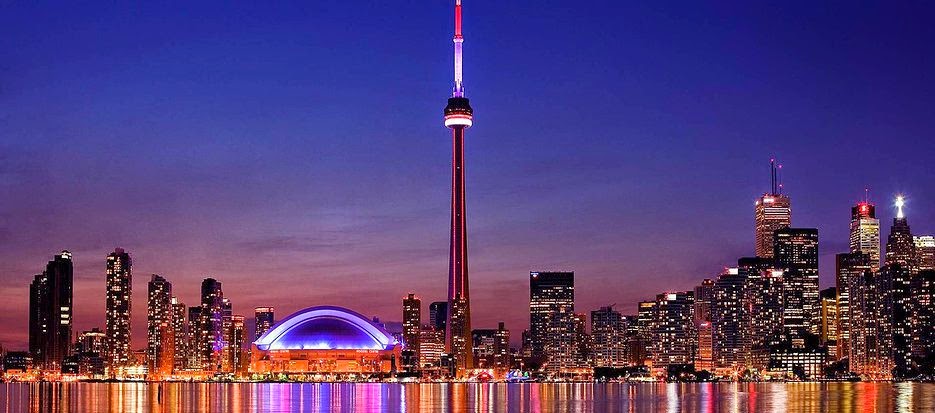Toronto will become the center of the universe this week as the city hosts the 65th International Astronautical Congress (IAC) 2014. Taking place from September 29th to October 3rd, the annual international convention will bring space to Canada. This year’s theme, Our World Needs Space, covers a plethora of topics — many of which are related to space safety. Ranging from human spaceflight to space debris, the conference is an opportunity for space professionals and students from across the globe to network, share their ideas, and learn with the global space community.
The one week long conference will include a variety of symposia, each containing a series of sessions. These talks will be given by researchers and experts in their fields. Several of the symposia follow the theme of space safety — including the Space Exploration, Human Exploration of the Solar System, Space Debris and Human Spaceflight symposia. Looking into where humankind has gone and may go in the future, as well as the societal implications of discovering extraterrestrial intelligence are important topics of discussion at the IAC.
Breaking It Down
The Space Exploration Symposium (A3) covers the current and future robotic missions and material plans for initiatives in the exploration of the Solar System. Coordinated by Dr. Christian Sallaberger from Canadensys Aerospace Corporation and Prof. Bernard Foing from ESA/ESTEC, this symposium covers exploration of the solar system, including the Moon, Mars, and small bodies. Speakers from NASA and the German Aerospace Centre DLR will present their research as part of this symposium.
The Human Exploration of the Solar System (A5) will tackle the strategic plans, architectural concepts, and technology development for human exploration of the Moon, Mars, Lagrangian Points, and near Earth objects (NEOs). These are important areas of discussion, especially within the area of space safety since the methods by which humans explore the solar system should maintain an appropriate standard of safety.
The Space Debris (A6) symposium addresses the wide range of technical issues associated with space debris. Measurements, modeling, and risk assessment in space and on the ground are addressed by speakers from organizations such as Boeing and SwissSpace Systems and universities such as the University of Surrey and Concordia University. Reentry; hypervelocity impacts; and protection, mitigation, and standards and space surveillance will also be presented and discussed as a part of the Space Debris Symposium.
The Human Spaceflight Symposium (B3) symposium addresses all practical aspects of human spaceflight. Mr. Christian Bank from EADS Astrium Space Transportation GmbH and Mr. John Uri from NASA are coordinating the symposium, which will include talks on governmental and commercial human spaceflight programs as well as advanced systems, technologies, and innovations for human spaceflight.
Top Picks
This wide variety of space safety-related topics being discussed at the IAC demonstrates the importance of such a conference in terms of connecting and inspiring like-minded people. The session that I am most looking forward to is the Heads of Agencies plenary event where leaders of the world’s major space agencies will outline the latest developments in their countries. The session may also provide an interesting variety of perspectives on the future of human spaceflight, including the International Space Station. Another highlight of the week for me is theNext Generation Plenary – Innovations in Exploration on Tuesday at 13:30. Moderated by former Canadian Space Agency astronaut Chris Hadfield, the panel is comprised of a selection of young professionals who will discuss why they believe their ideas will change the way we explore space and how space impacts life on Earth. This interaction between a world-renowned astronaut and the next generation of space leaders is a powerful method of generating novel ideas through discussion.
Space Safety Magazine at IAC
Along with 3,000 participants from over 70 countries attending the week-long conference, there will also be presentations from Space Safety Magazine contributors including Matteo Emanuelli, Andrew Henry, Morris Jones, and Merryl Azriel. Matteo will present The NEO Threat: An Effective Public Communication Strategy dealing with NEO education and the ways in which to effectively communicate such a threat to the public three years in advance. Andrew will conduct a workshop on Earth Observation Data on Thursday afternoon and Morris Jones will present a paper on Cryptosociology and Extraterrestrial Civilizations Wednesday afternoon. Merryl Azriel will present the Space Safety Magazine-led initiative to recognize the International Space Station (ISS) Partnership with a Nobel Peace Prize award. With a presentation entitled Advocating for a Nobel Peace Prize: An Innovative Approach to Promoting Global Space Engagement, Merryl will delve into the unique value of the ISS partnership and the importance of increasing the public’s awareness of the value of the most complex peacetime collaboration ever undertaken by humankind.
Founded in 1951 by the International Astronautical Federation (IAF), the IAC is a joint effort by the IAF and a local Host. This year this it is the Canadian Aeronautics and Space Institute (CASI) that is coordinating the logistics in Toronto and ensuring that the North American aspect of IAC 2014 is a prominent characteristic of this year’s conference.
Written by Nikita Marwaha for Space Safety Magazine


No comments:
Post a Comment